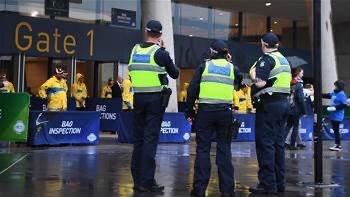Audit finds no footage for one in ten incidents.

Victorian police officers are not always activating body-worn video cameras (BWCs) where they are required to, with no footage captured for one in ten incidents, the state’s auditor-general has revealed.
In an audit [pdf], the Victorian Auditor-General’s Office (VAGO) found non-compliance by at least one of two attending officers in 16.4 percent of instances that required recording in March.
In just under 10 percent of instances, none of the two attending officers captured footage using a BWC, despite “fit-for-purpose policies and training materials” governing use of the devices.
The audit said that not always recording incidents that require it could result in weaker evidence for investigations, reduced transparency in complaints investigations and reputational damage.
VAGO compared BWC footage data to other data from Victoria Police’s ePDR (electronic patrol duty return) system to come up with the figure.
“Our data analysis showed that Victoria Police officers activated BWCs in 83.6 percent of the instances they were required to record,” the audit said.
“However, Victoria Police did not know this because it does not consistently measure police officers’ overall compliance with the activation framework.”
The report said that because Victoria Police does not assess compliance with the framework, “it cannot be assured that police officers are consistently activating BWCs when needed”.
Victoria Police in October 2021 took steps to improve its monitoring of BWCs with a dashboard, but this was found to be unhelpful for measuring “overall compliance with [the] activation framework”.
“While the dashboard can help supervisors check some areas of compliance, such as categorising footage, it does not measure overall compliance with the activation framework,” the audit said.
“For example, it does not show if police officers activate their BWCs for all required incidents.”
Victoria Police is said to be considering “integrating ePDR data”, as well as other data sources, to the dashboard.
Password policy
The audit also found that while only system administrators can manually delete footage, reducing the risk of lost evidence, this was negated by Victoria Police’s password policy.
“Victoria Police’s password policy does not comply with the Australian government’s Information Security Manual because it does not enforce better-practice password complexity requirements,” it said.
“For example, dictating the number and types of characters a password must contain.”
Victoria Police was also found to “not follow all of the data security protocols that its BWC contractor recommends”.
“These weaknesses reduce protection of BWC footage and increase the risk of unauthorised internal access,” the audit said.
Victoria Police is currently “trialling an updated [password] policy and plans to roll it out… from mid-2022”.
When reviewing a sample of the system audit logs, VAGO also found that “BWC files had only been deleted by the system in accordance with Victoria Police’s retention periods”.
“These audit logs cannot be altered, even by system administrators, and retain metadata after recordings have been deleted,” the report said.
“This means that Victoria Police maintains key data about deleted footage.”
Victoria Police has accepted three of the eight recommendations and another three in-principle due to “external constraints, practical barriers, resourcing and financial limitations”.
It did not accept a recommendation to establish a policy to regularly and consistently review audit logs to reduce the risk of mishandling BWC footage because no mishandling was identified, it said.
Another recommendation – to develop monitoring and reporting processes to allow it to measure the use of BWC footage in legal proceedings and complaints against police – was also not accepted.
The audit found that while Victoria Police has used BWC footage to help resolve complaints against police officers, it has no “efficient way to track when it has used footage” in an investigation.
BWCs were first trialled in 2018 following a recommendation from the 2016 Royal Commission into Family Violence.
Following the six-week pilot of 134 devices in Epping and Ballarat, the force deployed the devices – funded to the tune of $42.6 million in the 2016-17 budget – to all frontline officers across the state.
Victoria Police completed the rollout in November 2019. As of the end of March 2022, Victoria Police had 10,284 BWCs in operation.
BWCs are provided by law enforcement technology provider Axon under a $53 million contract that runs until 2023.
